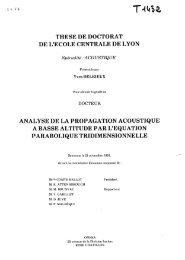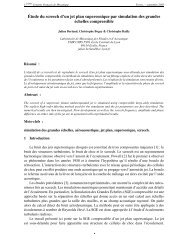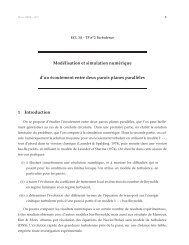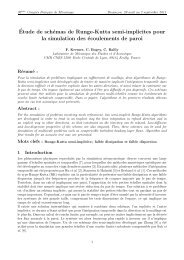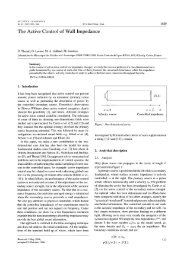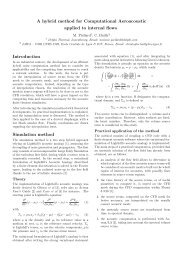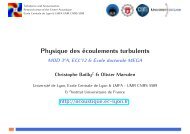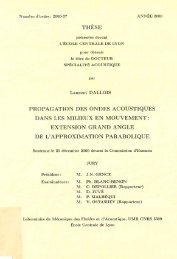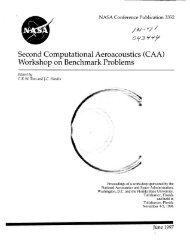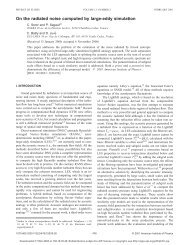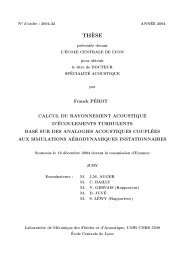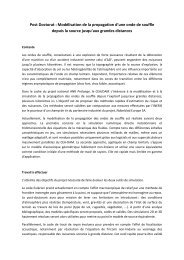Localisation/identification de sources Une introduction - Centre ...
Localisation/identification de sources Une introduction - Centre ...
Localisation/identification de sources Une introduction - Centre ...
Create successful ePaper yourself
Turn your PDF publications into a flip-book with our unique Google optimized e-Paper software.
Au final<br />
p(k ˆ ,k ,d) p(k ˆ ,k ,0)e −<br />
ik d<br />
z<br />
= qui peut être indifféremment utilisée dans ce sens pour<br />
x y x y<br />
Remarque capitale :<br />
propager la solution vers le champ lointain, ou au<br />
contraire en sens inverse pour se rapprocher <strong>de</strong> la source.<br />
<strong>Une</strong> TF inverse permettra <strong>de</strong> revenir aux variables<br />
physiques.<br />
( )<br />
2 2 2 2 2<br />
0 > x + y z = 0 − x + y<br />
Si k k k , k k k k est réel<br />
ikzd e − correspond à un simple déphasage; le module <strong>de</strong> chaque composante <strong>de</strong> Fourier est<br />
conservé<br />
On a une classique décomposition en on<strong>de</strong>s planes<br />
( )<br />
2 2 2 2 2<br />
0 < x + y z = 0 − x + y<br />
Si k k k , k k k k est imaginaire pur<br />
( )<br />
2 2 2<br />
z x y 0<br />
-ik d<br />
z<br />
k = − i k + k − k et e = e<br />
( )<br />
− k + k −k<br />
d<br />
2 2 2<br />
x y 0<br />
Le facteur <strong>de</strong> passage <strong>de</strong> 0d est <strong>de</strong> module décroissant exponentiellement quand on<br />
s’éloigne <strong>de</strong> la source; on parle d’on<strong>de</strong>s (planes) évanescentes.<br />
Evi<strong>de</strong>mment quand on cherche à se rapprocher <strong>de</strong> la source ces composantes <strong>de</strong> Fourier<br />
seront amplifiées exponentiellement.



